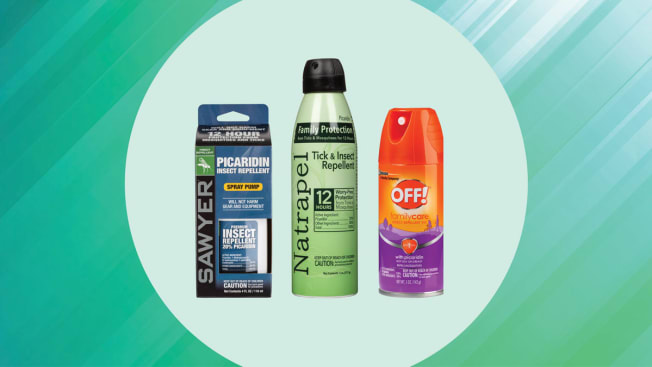How Well Do Picaridin Insect Repellents Work?
Looking for an alternative to deet? Bug sprays containing picaridin can help protect you from biting pests.
When you shop through retailer links on our site, we may earn affiliate commissions. 100% of the fees we collect are used to support our nonprofit mission. Learn more.

Do you hate mosquitoes but prefer not to use deet? While deet has a well-established safety record, Consumer Reports’ tests show that you have some other safe and effective options, including picaridin.
Here, we explain what picaridin is, how well it performs in our tests, and what you need to know about its safety.
What Is Picaridin?
Picaridin is a synthetic insect repellent ingredient that has been available in the U.S. since 2005. It was created by Bayer and is based on the piperidine molecule, a chemical found in some pepper plants.
How Well Does Picaridin Work?
CR tests insect repellents by having volunteers put their repellent-covered arms into cages full of disease-free mosquitoes and seeing how long it takes for the bugs to start biting. Our current ratings include 13 products that have picaridin as their active ingredient. Of those, four performed well enough to earn our recommendation.
“Our testing can’t determine precisely why some picaridin repellents last for a long time while others don’t,” says Chris Regan, who leads CR’s insect repellent testing. But some patterns have emerged. For example, all of our recommended picaridin repellents are pump or aerosol sprays. None that come in lotion or wipe form provide comparable protection in our tests (though some picaridin sprays fall short as well).
When it comes to the concentration of the active ingredient, the picture gets somewhat murkier. Three of the four recommended picaridin repellents have a concentration of 20 percent, while one has a 10 percent concentration. So if you want to use a picaridin-based insect repellent, it’s probably best to stick with a spray that has 20 percent picaridin, Regan says. Still, several other products with those same concentrations didn’t last long enough to earn our recommendation, so you can’t go by concentration alone. Members can check our full ratings here.
Picaridin’s efficacy as a repellent is backed up by published research in addition to CR’s tests. In a 2018 analysis of studies testing picaridin’s effectiveness against mosquitoes, researchers concluded that the evidence appears to suggest that picaridin-based repellents provide about the same amount of protection as deet-based repellents.
So what about ticks? Picaridin is registered with the Environmental Protection Agency as a tick repellent as well as a mosquito repellent. For most repellents, CR’s tests evaluate only how long they keep mosquitoes at bay. But recently, we tested four repellents against ticks, just to see how various ingredients stacked up. We tested two deet repellents, one OLE repellent, and a picaridin repellent, the Sawyer Picaridin Insect Repellent, a pump spray with 20 percent picaridin. This particular product did a decent job of warding off ticks, typically offering at least several hours of protection. But the OLE product generally lasted longer, and the deet products even slightly longer.
Still, other outside evidence suggests that picaridin can provide solid protection against ticks. The Wilderness Medical Society, for example, says evidence suggests that picaridin is effective against ticks comparable to deet. Check product labels to see how long manufacturers suggest they should last.
Is Picaridin Safe?
Picaridin’s safety hasn’t been as well studied as that of deet, which has been commercially available for decades longer. But evidence suggests that picaridin poses little risk when used according to the directions on the label. Possible adverse effects include skin and eye irritation, but these appear to be very rare.
In a study of calls to U.S. Poison Control Centers between January 2000 and May 2015, researchers found that of all the calls concerning picaridin, just one resulted in a person being hospitalized, and most problems were easily handled at home.
Picaridin Insect Repellents to Try
Here are a few of CR’s recommended products containing 20 percent picaridin.
@consumerreports We test lotions, sprays, wipes, and plant-based repellents on real people using real mosquitoes 😳 🦟 CR Members can unlock the year’s best—tap the link in our bio. #bugtok #insectrepellent #bugspray #summertok
♬ original sound - Consumer Reports - Consumer Reports
































